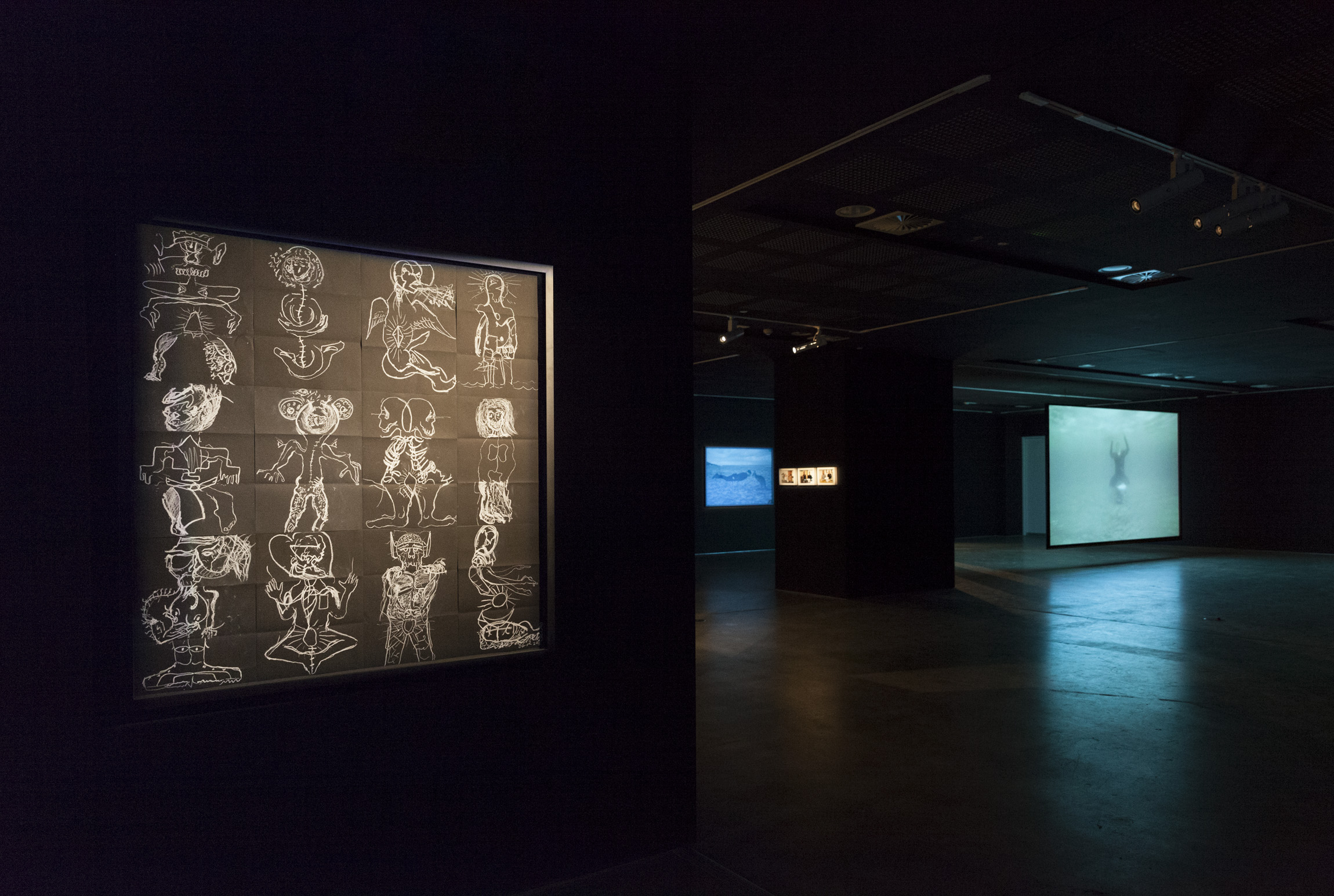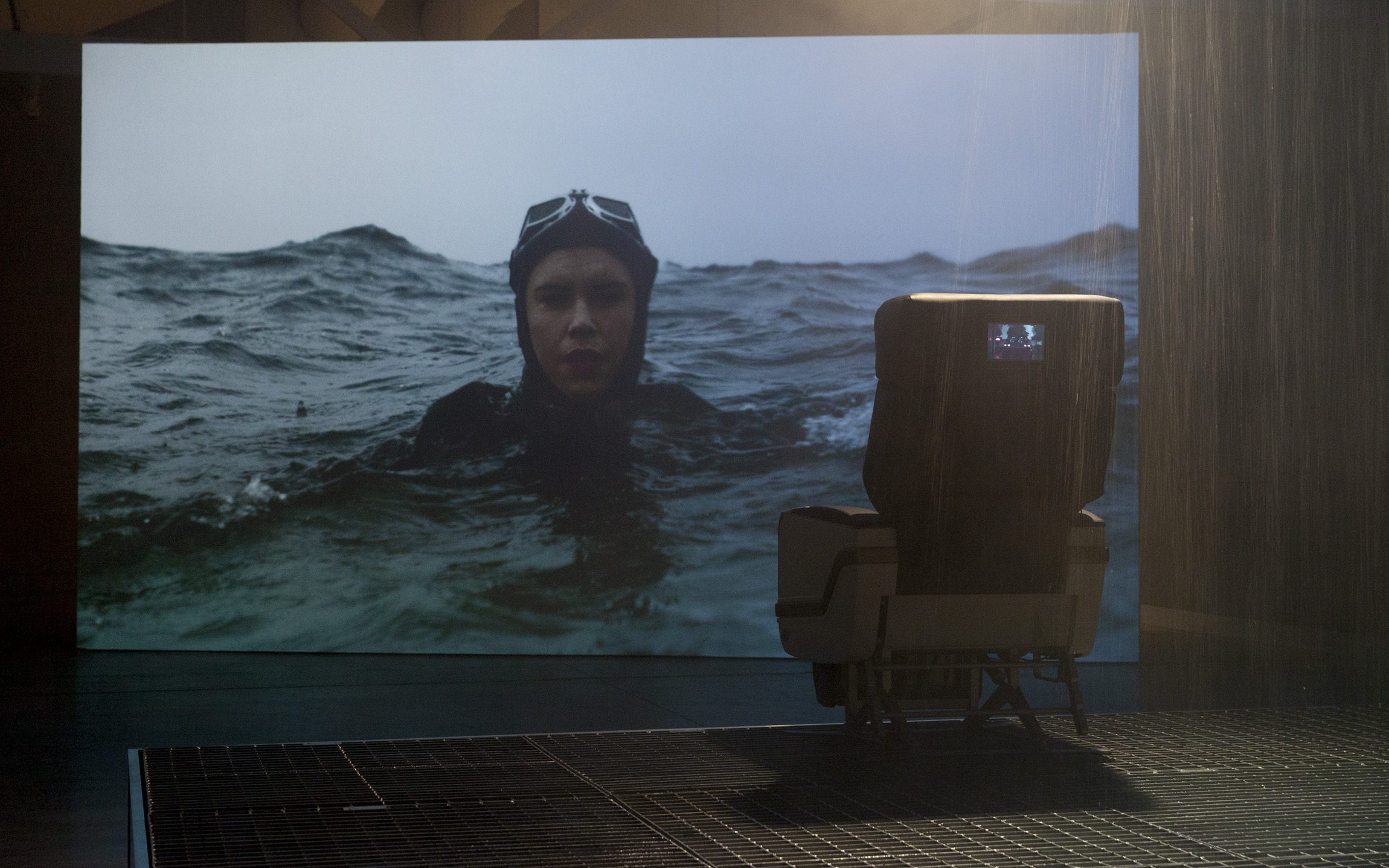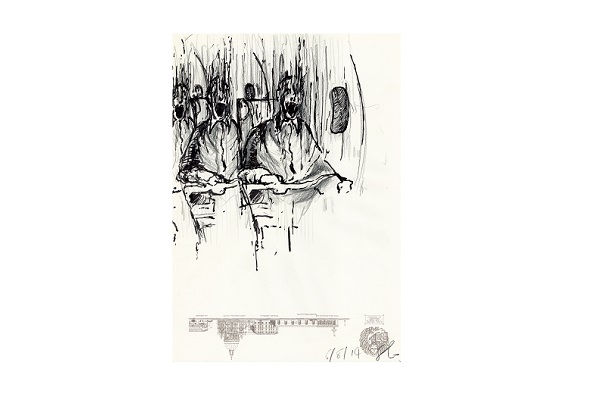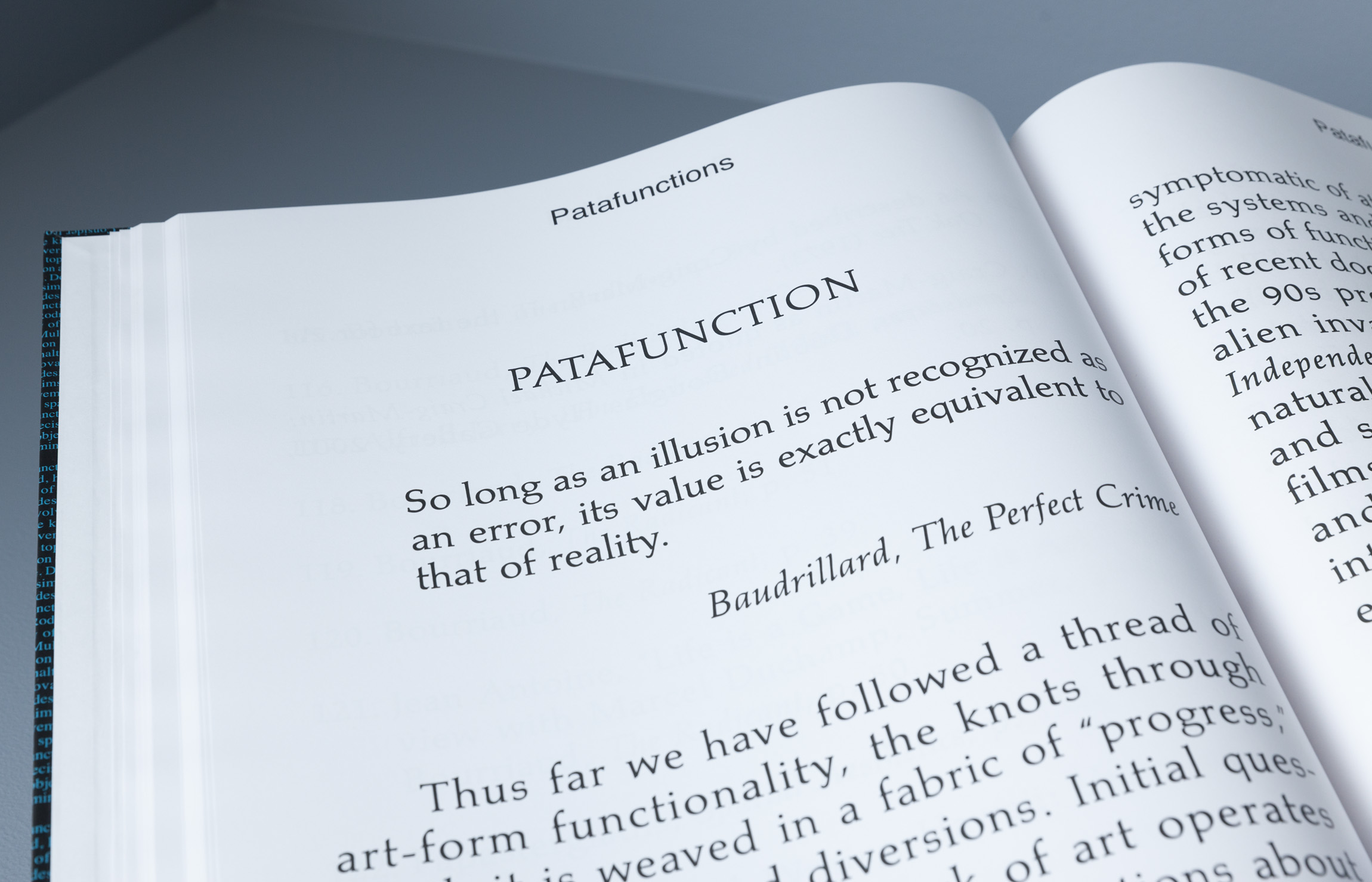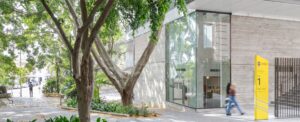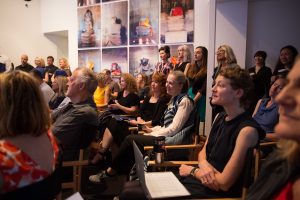I kicked off Art Month with Shaun Gladwell. His double project is showing simultaneously across two locations; Collections+: Shaun Gladwell at UNSW Galleries, and The Lacrima Chair at Sherman Contemporary Art Foundation (SCAF).
Collections+: Shaun Gladwell is a retrospective survey of works from private and public collections in Australia and abroad. There are over 20 works on show including the powerful photographic portraits from his time as official Australian war artist in Afghanistan.
Omnipresent throughout Gladwell’s work is the idea of duality. Take for instance, the titles of his works Double Linkework, Double Voyage, Double Field/Viewfinder (Tarin Kowt), Double Balancing Act, and you’ll soon see Gladwell urging us into other people’s reality, creating an interactive viewing experience for the visitor. In Untitled (Wanderer Above the Sea of Fog), a still image in reference to a well-known painting by Caspar David Friedrich, Gladwell’s subject stands on the craggy peak and looks into the fog. Attention is focused on the back of the man who is looking outward into the landscape; this man is your double, a doppelgänger through whom we see his world. If you haven’t seen Friedrich’s original, check it out here and Gladwell’s piece will make more sense.
Omnipresent throughout Gladwell’s work is the idea of duality.
Gladwell takes advantage of this standpoint in his portraits of soldiers photographed from behind. As a viewer, your focus turns to the soldiers themselves; seeing and understanding the subject’s environment, allowing you to participate in their experience. Without showing you anything explicitly about the war, Gladwell’s duality enables viewers to participate in the experience of the war through his doppelgängers.
Later, I hop-skip-tumbled over to SCAF and entering through a curtain of dry ice, stood in front of the centrepiece, The Lacrima Chair. This newly commissioned work incorporates Gladwell’s signature elements; movement, landscape, the muse, and duality.
The duality he’s pointing us to here, is the duality of the private-is-public space within an aeroplane. The sharing of armrests, meals and movies, and in many instances according to Gladwell, the shedding of tears – in close proximity with complete strangers causes the intensely private to become very public.
To evoke this idea, viewers are invited to sit in the pedestalled aircraft chair, put on a rain poncho and be soaked by an overhead shower. The name of the piece derives from the Latin word for tear being ‘lacrima’, hence the connection to getting seriously wet.
While experiencing this heavy duty crying, a video piece based on Nancy Bird Walton plays on a large screen facing the chair. This can be viewed from behind the chair if you choose not to get soaked. Gladwell, himself an introspective being, has said that when visitors take a seat it signals to him that the piece is finished, so he’s clearly in need of volunteers. You’ll experience the work from his point of view and render yourself open to others.
Although unnecessarily convoluted at times, Gladwell is capable of using something familiar (iconic painting, aircraft chair, helmet) and turn it into a visually compelling piece.
The Lacrima Chair makes references to Francis Bacon’s Study after Velázquez’s Portrait of Pope Innocent X with the obvious associations of donning the robe like poncho and being silenced under a downpour. Gladwell has spoken of the piece’s association to a personal story of his grandfather watching a film in the rain while serving in Darwin in WWII. The video piece depicts an obscure fictional narrative of the glamorous Nancy Bird Walton searching the seas for her aviation colleague Sir Charles Kingsford Smith after his fatal crash of 1935. Rounding out this new body of work is a pseudo academic text written in collaboration with two philosophers.
The majority of these references and associations can only be ascertained after reading the exhibition catalogue, watching interviews with Gladwell or by specifically researching the project. In my opinion, this ultimately makes the work confusing and unnecessarily perplexing.
Nonetheless, like the message conveyed in Gladwell’s most recent piece Vase (2014) – poppies planted inside a soldier’s helmet – I am optimistic for the direction which Gladwell has taken for the future. Although, in my opinion, unnecessarily convoluted at times, Gladwell is capable of using something familiar (iconic painting, aircraft chair, helmet) and turn it into a visually compelling piece, through which he seeks to connect with his viewers as an intimate doppelgänger.
Whether you’re a fan or sceptic, or first-time viewer of Gladwell’s work, sitting in the crying chair does give you the opportunity to experience the range of emotions which parallel Gladwell’s experience in an aeroplane – tears down your face, literally!
Drop by on your way to brunch, in-between shopping or library visits and be the next person to complete The Lacrima Chair. This show is a must-add in your Art Month calendar. But be sure to take an umbrella.
The Lacrima Chair is on exhibition at Sherman Contemporary Art Foundation’s Goodhope Street gallery, Paddington, and Collection+: Shaun Gladwell is at UNSW Galleries, UNSW Art & Design, Paddington.
Exhibition Dates: 6 March 6 – 25 April 25 2015.
For more information visit: www.sherman-scaf.org.au or www.artdesign.unsw.edu.au
Meet Hanna Kim Hong, one of our roving reporters. Mother of a young family and legal advocate with the Arts Law Centre, Hanna still gets time to check out what’s on in galleries and museums about town. Read what she’s got to say.

